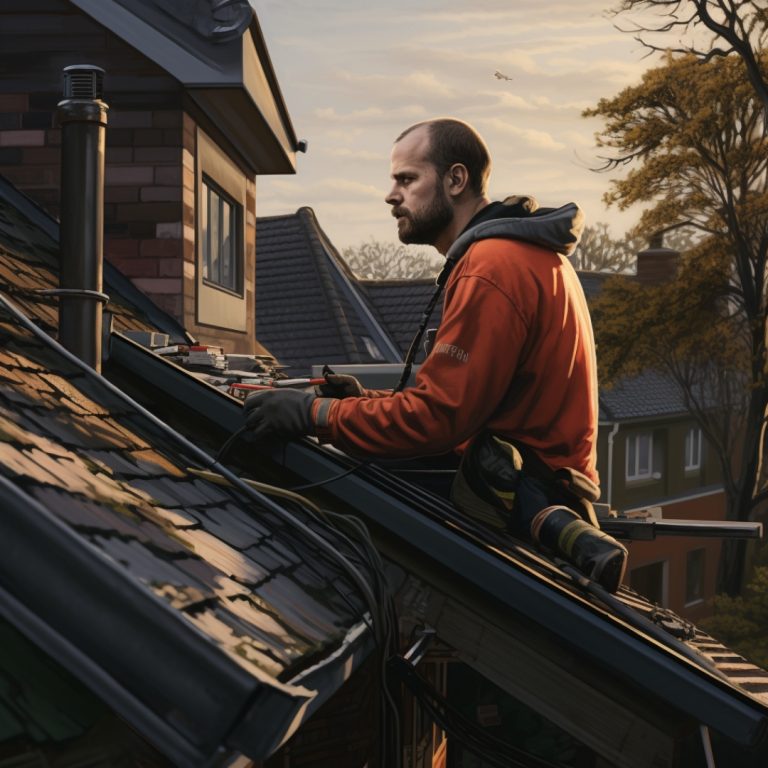A beautiful home exterior is incomplete without well-maintained gutters. And what’s better than giving your gutters a fresh coat of paint? Not only does it enhance curb appeal, but it also protects them from damage. However, gutter painting may seem challenging, especially if you’re new to the process. Fret not, as we’ve got you covered with our ultimate guide to gutter painting, outlining expert tips and techniques to achieve stunning results. Ready to transform your gutters? Let’s get started!
Key Takeaways
- Gutter painting requires the right tools, materials and preparation for successful results.
- Evaluate gutters to determine whether they need paint or replacement.
- Adhere to safety protocols and best practices when painting, hire a professional if needed, and follow regular maintenance guidelines for longevity.
Essential Tools and Materials for Gutter Painting
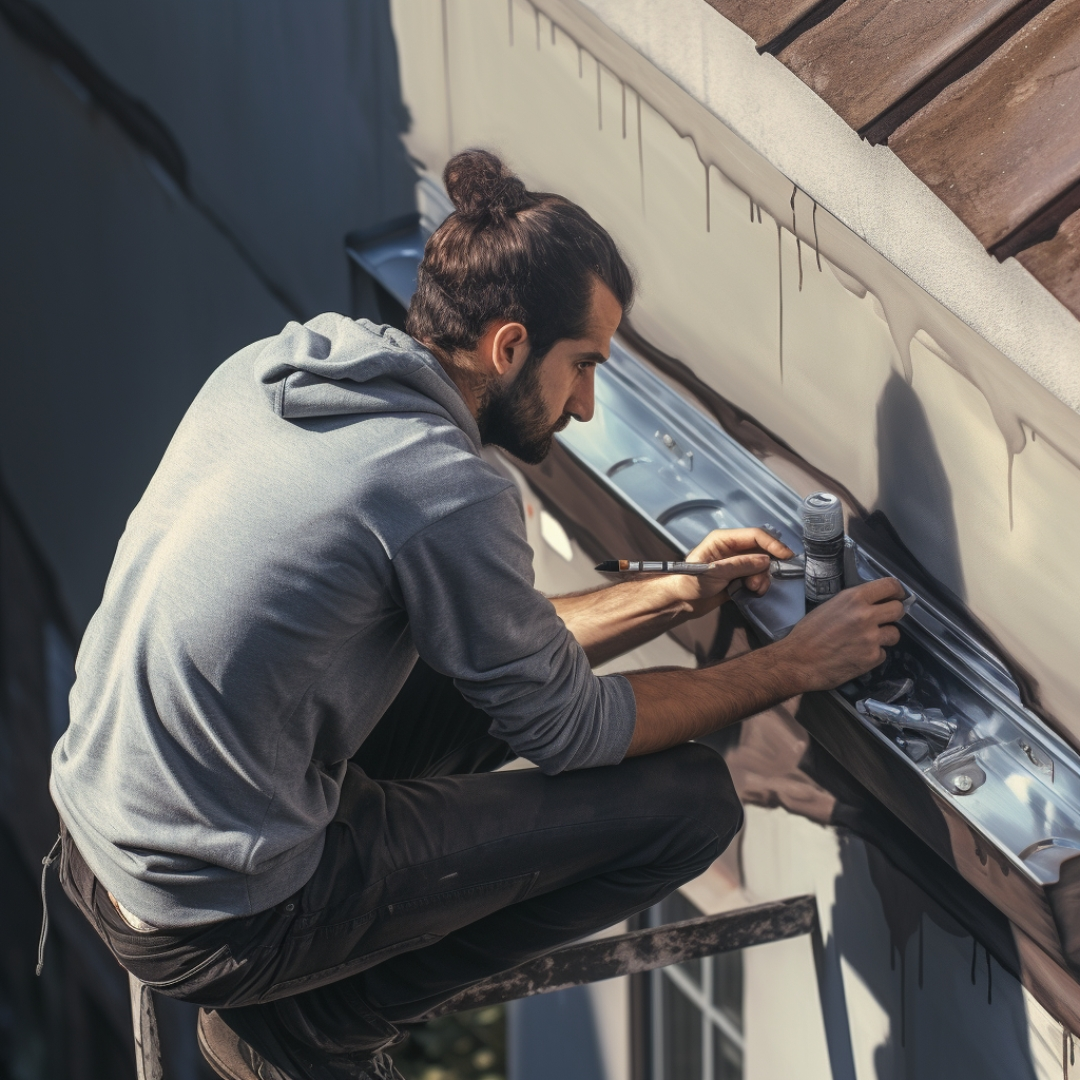
Before we begin the painting process, gathering the appropriate tools and materials is key to achieving a successful result. You will need:
- a paint brush
- a roller
- primer
- paint specifically designed for gutters
- a plastic putty knife
Selecting the suitable paint, such as oil based paint, is instrumental in preventing future peeling and flaking.
When you need to paint aluminum gutters, follow these steps:
- Use a paint sprayer for the initial application.
- Use a paintbrush to correct any runs and ensure an even coat.
- Check the weather forecast to guarantee the best conditions for your freshly painted gutters to dry properly.
Evaluating Your Gutters: When to Paint or Replace

Before undertaking the painting task, it’s necessary to evaluate your gutters’ condition. A simple cleaning might suffice, or you may need to paint or even replace them. Working on a flat surface ensures an even application of paint. Consider the material of your gutters: painting vinyl gutters is not recommended due to their finish.
Inspect your gutters for significant rust, which can lead to sagging and water overflow. Gutters are typically constructed from steel, aluminum, or plastic, and the type of gutter material influences your painting decisions.
Finally, evaluate whether you need to paint the entire system or just specific sections. In some cases, removing the gutters might be necessary before painting. However, this is generally not required for most homeowners.
Prepping Your Gutters for a Successful Paint Job
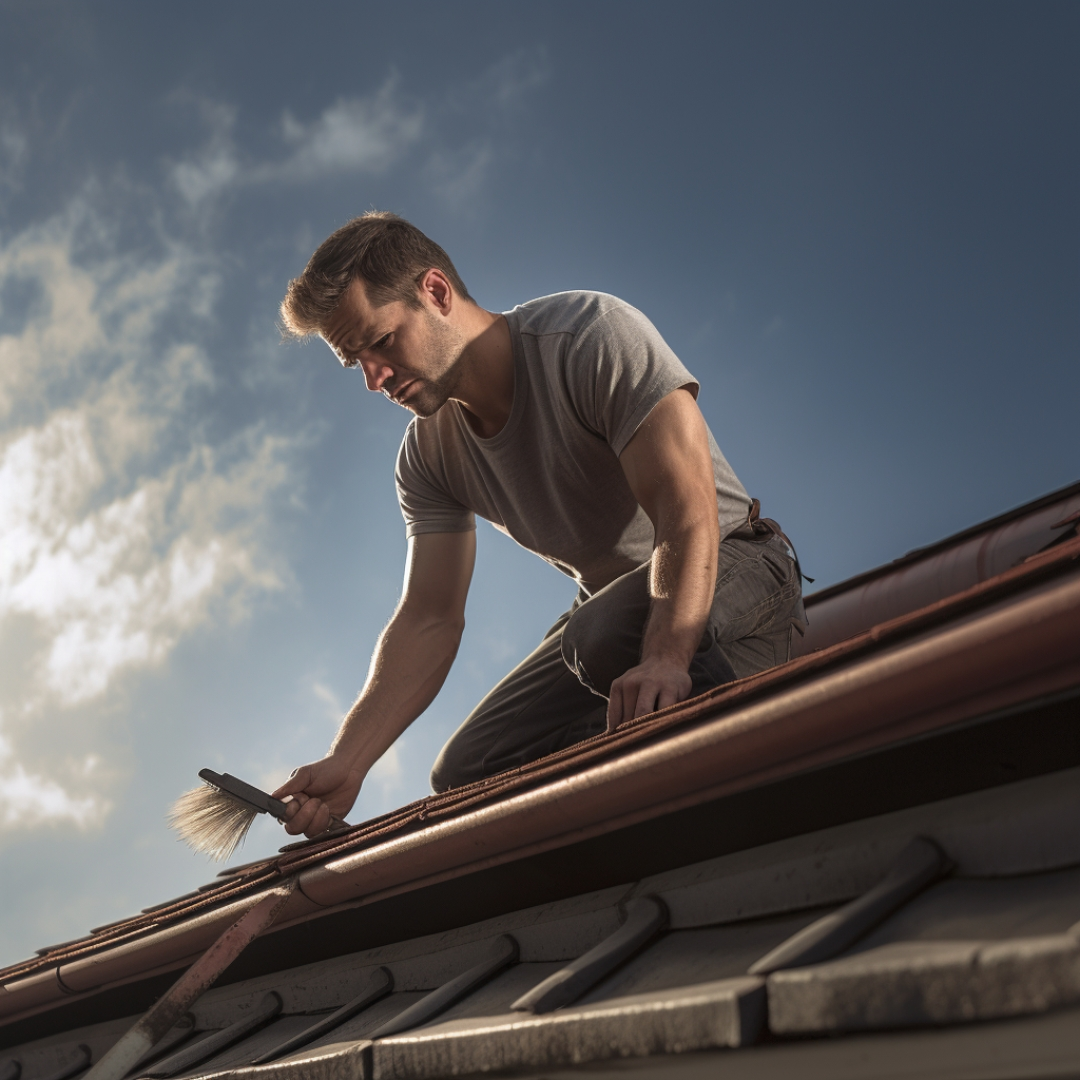
Meticulous preparation of your gutters is a prerequisite for a flawless paint job. Three key steps to follow include cleaning your gutters, inspecting and repairing any damages, and applying primer.
Let’s dive into each of these steps in more detail.
Cleaning Your Gutters
Before painting, it’s important to clean your gutters thoroughly. Here’s how:
- Start by using a bucket of soapy water and a scrub brush to remove dirt and debris.
- Gutters made from vinyl require special care. Detergent dish soap is recommended for cleaning them.
- Allow the gutters to dry for 4-6 hours after cleaning.
If any dirt or debris remains, consider using a gutter or siding detergent.
Inspecting and Repairing Gutters
Once your gutters are clean, inspect them for any damages or leaks. Address sagging gutters by securing loose screws and reinforcing severely sagging areas with gutter braces. If you observe rust, clean the gutters and assess the extent of the damage to determine if repairs or replacements are necessary.
Applying Primer
For optimal paint adhesion, application of the appropriate primer is a must. A clear acrylic bonding primer is recommended for aluminum or steel gutters. Apply an even coat of primer to the gutter surface and wait a full 48 hours before moving on to the next step.
Remember, primer enhances the durability of your paint job and prepares the surface for a smooth topcoat of paint.
Painting Techniques for Different Gutter Materials
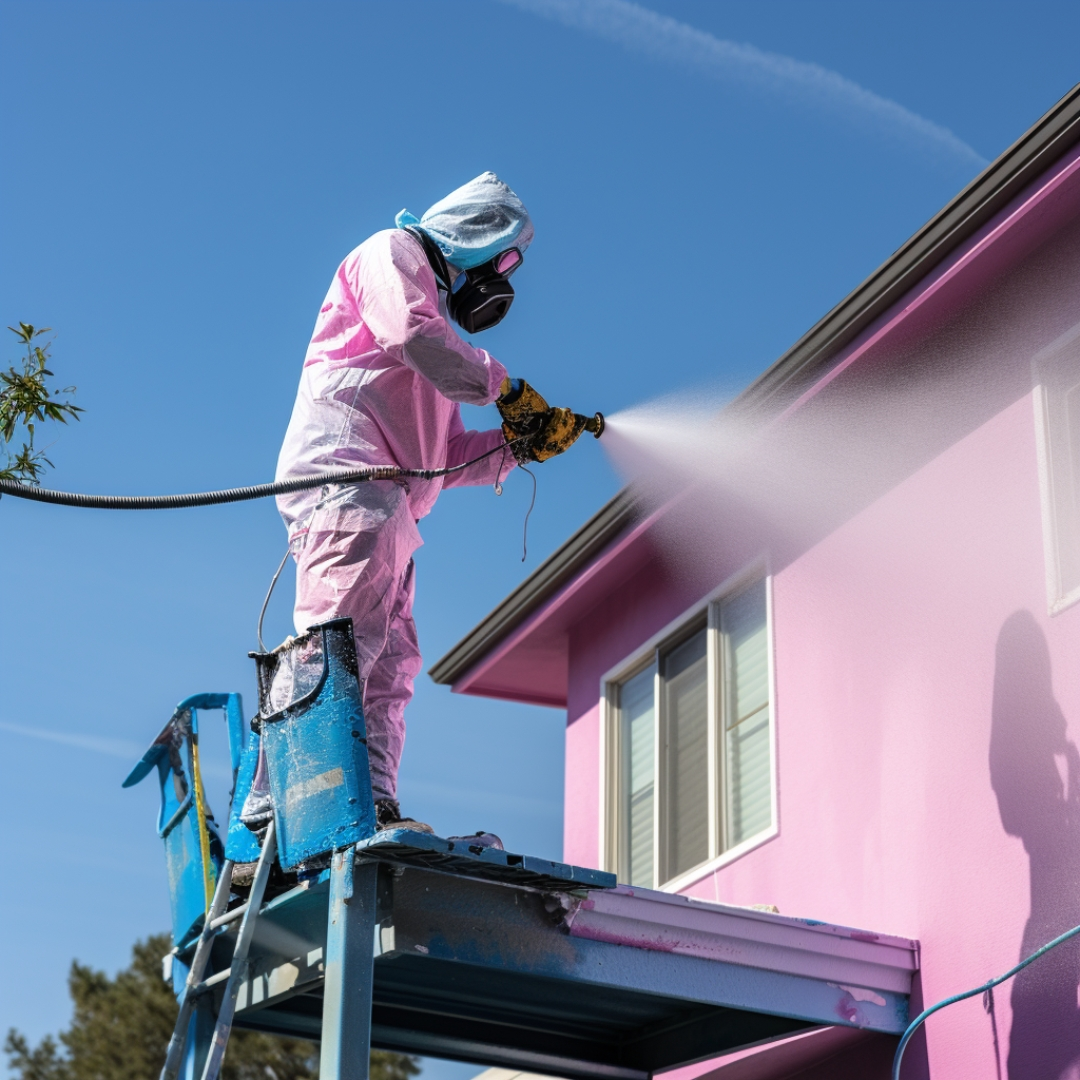
With your gutters now prepared, we can delve into expert painting techniques for various gutter materials. For aluminum or steel gutters, use a clear acrylic bonding primer for the best finish. This should then be followed by 100% acrylic paint. Epoxy-based paint is best for vinyl gutters, as it forms a strong bond and ensures long-lasting color.
When applying the base coat, use clean paint brushes and apply the paint thinly to prevent drips. Wait for the first coat to dry before applying a second coat, if necessary. Keep in mind that the type of gutter material will greatly influence your painting decisions.
Benefits of Using a Paint Sprayer vs. Brush for Gutter Painting
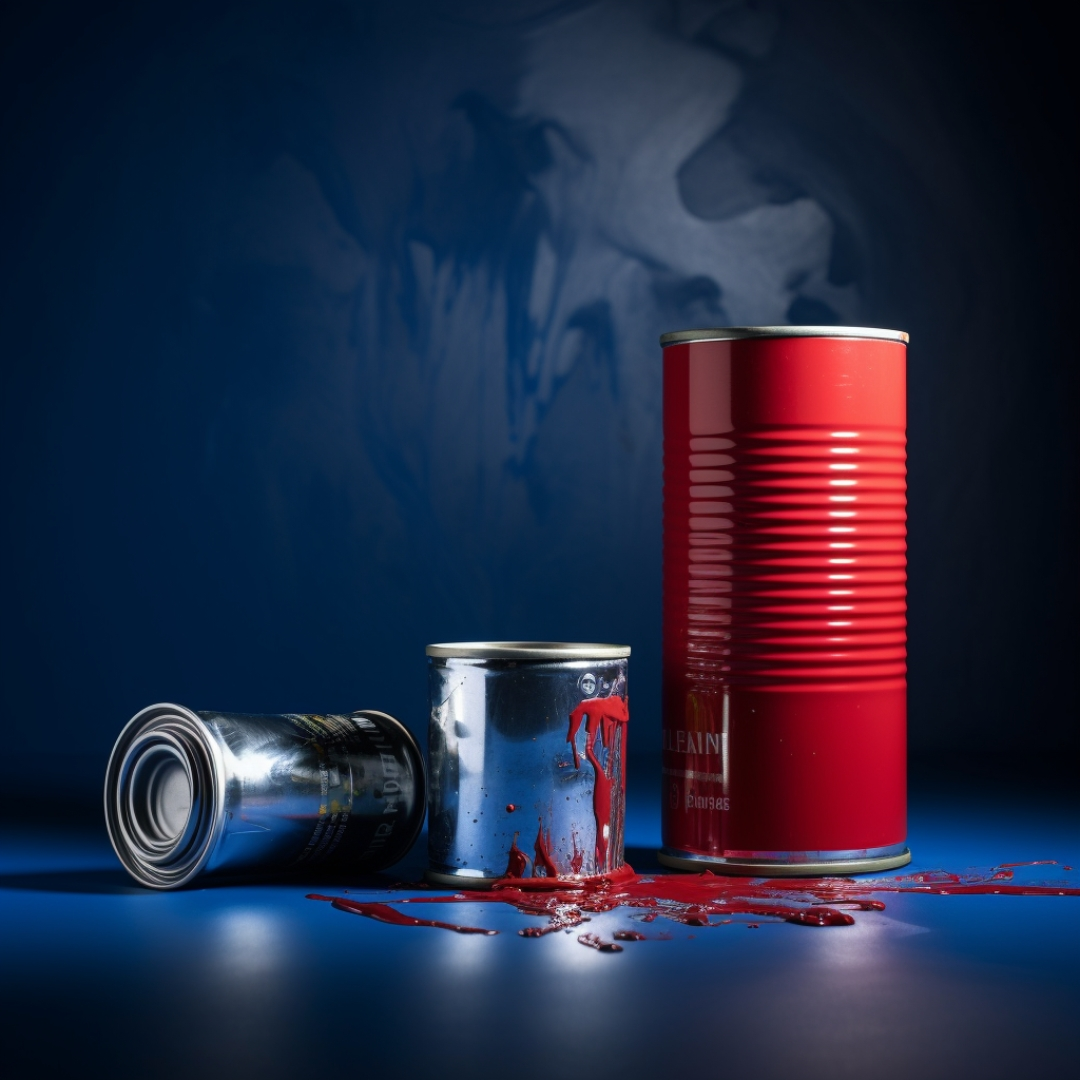
In the process of painting gutters, your main choices are either using a paint sprayer or a paintbrush. A paint sprayer offers greater coverage, making the application quicker and more efficient when you paint gutters. However, it may require additional paint compared to brushing. Ensure you wear goggles and gloves when operating a sprayer for safety.
On the other hand, using a paintbrush can be time-consuming and labor-intensive, with the potential for visible brush strokes and difficulty accessing tight corners. Ultimately, the choice between a paint sprayer and a paintbrush depends on your personal preferences, budget, and comfort with the tools.
The Importance of Choosing the Right Paint and Color for Your Gutters
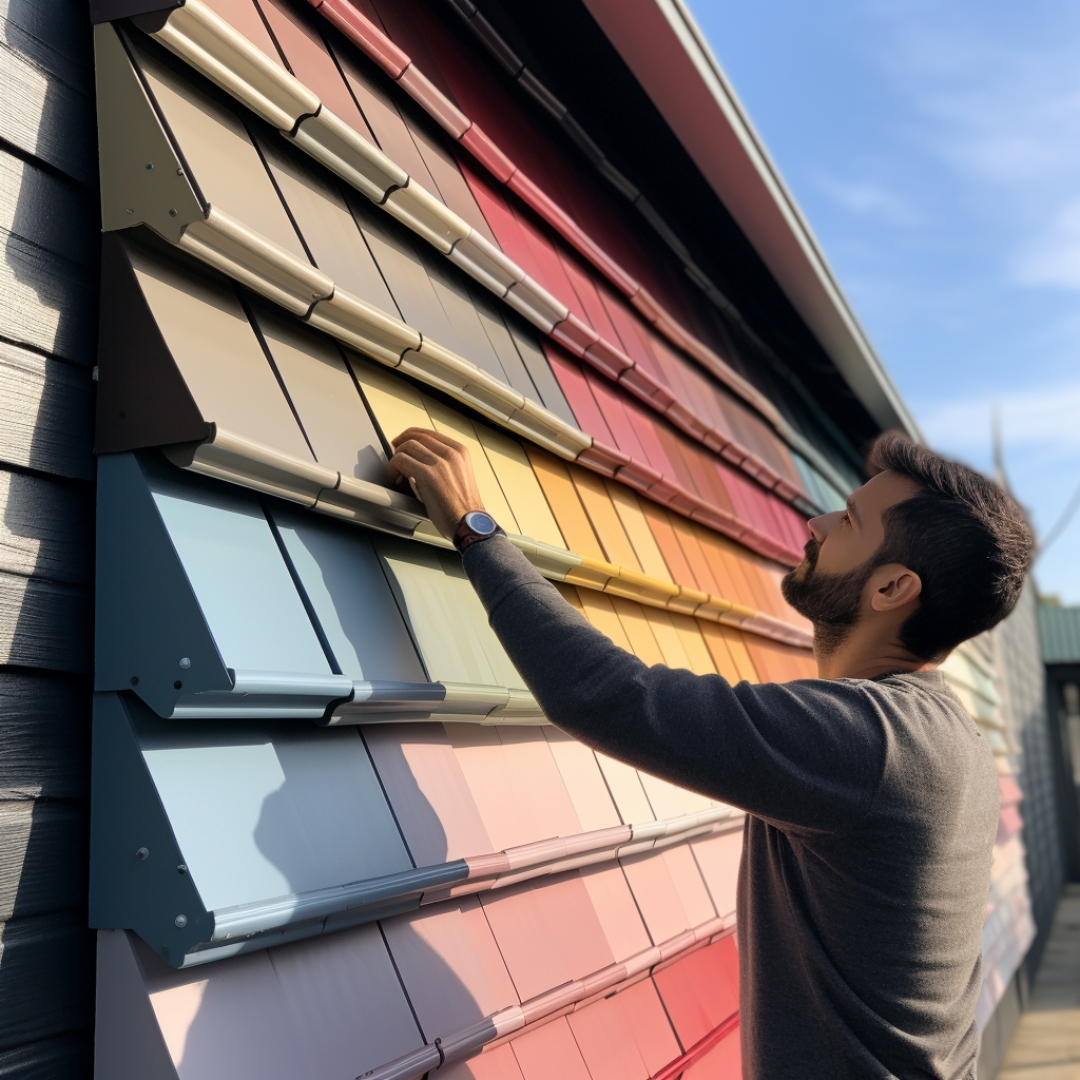
Choosing the appropriate gutter paint and color for your gutters plays a crucial role in enhancing your home’s curb appeal and ensuring durability. It is essential to choose a paint that is suitable for your specific gutter material. For example, acrylic exterior paint is suggested for aluminum gutters, while epoxy-based paint is preferred for vinyl gutters.
When choosing a gutter color, consider opting for neutral colors that coordinate with your home’s exterior hues. Lighter shades may accumulate dirt and tiger stripes more quickly than darker colors. Keep in mind that the right paint and color selection will contribute to the longevity and appearance of your painted gutters.
Safety Tips and Best Practices for Gutter Painting
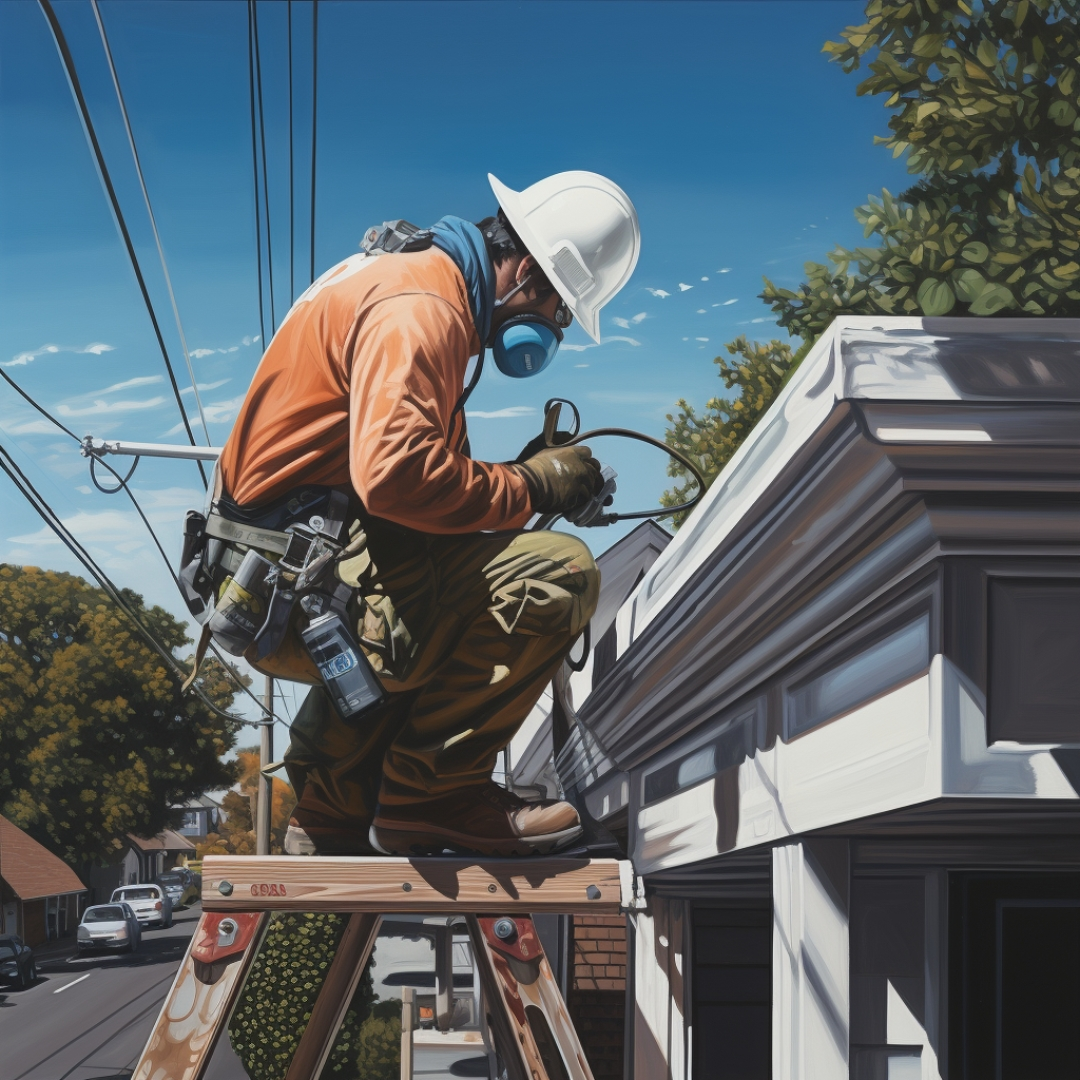
When painting gutters, safety should always be your foremost concern. Ensure ladder safety by having a spotter hold the ladder’s base while you work. Schedule your painting project during agreeable weather conditions, avoiding extreme temperatures and wet or windy days, as they can affect paint adhesion and drying time.
Allocate sufficient time to complete the task without rushing, and take breaks as needed. Wearing personal protective equipment, such as safety glasses or goggles, dust masks or respirators, and gloves, is highly recommended.
Hiring a Professional vs. DIY Gutter Painting
In the realm of gutter painting, the choice between hiring a professional or embarking on a DIY journey may pose a dilemma. DIY gutter painting can be cost-effective, but it’s labor-intensive and requires meticulous attention. On the other hand, hiring a professional can be more convenient but also more costly.
It’s advisable to enlist a professional’s services for taller residences where ordinary extension ladders may not securely reach the gutters. Ultimately, the decision between hiring a professional and DIY gutter painting depends on your budget, time constraints, and comfort level with the task.
Gutter Maintenance: Ensuring Longevity of Your Painted Gutters
Regular maintenance of your gutters is key to ensuring the longevity of your paint job and warding off potential issues. Regular cleaning can reduce the necessity to paint or replace gutters. Debris accumulation in gutters, caused by neglect and a lack of maintenance, can lead to issues such as clogging and leaks.
Consider installing gutter covers to reduce the frequency of painting or replacing gutters and prevent sticks and leaves from accumulating in the gutters. Taking care of your gutters will ensure their longevity and keep your home’s exterior looking pristine.
Troubleshooting Common Gutter Painting Problems
Should you face challenges like flaking and peeling paint, clogging, or poor adhesion while painting your gutters, there’s no need for concern. Proper preparation, including cleaning and priming, can help avoid these common problems.
To repair peeling paint, follow these steps:
- Remove any flaking paint.
- Repair any holes or cracks in the surface.
- Clean the surface.
- Apply primer.
- Paint the gutters with a coat of latex paint.
For bubbling or blistering paint, address any leaks or water damage that may be causing moisture infiltration behind the paint film, leading to loose paint.
Summary
In conclusion, gutter painting is an essential aspect of maintaining your home’s exterior appearance and functionality. With the right tools, materials, and techniques, you can transform your gutters and enhance your home’s curb appeal. Whether you decide to hire a professional or go the DIY route, remember to prioritize safety, choose the right paint and color, and regularly maintain your gutters for optimal results. So, are you ready to give your gutters a fresh, new look?
Frequently Asked Questions
Is painting gutters a good idea?
Painting gutters is worth it because it can extend their life, and you can match the existing color using Sherwin Williams color matching techniques.
How long does gutter paint last?
Gutter paint typically lasts several years when applied to clean and well-maintained gutters. Regular maintenance and cleaning will help ensure it stays in good condition for longer.
Is it cheaper to replace gutters or paint them?
Painting your gutters is generally a cheaper option than buying new ones, and can be a quick way to update the look of your home.
Do you paint gutters with a brush or roller?
When painting gutters, use a synthetic bristle paint brush to apply the first coat of paint for an even coverage.
What tools and materials are needed for gutter painting?
Painting gutters requires a paint brush, roller, primer, and paint specifically designed for gutters.
